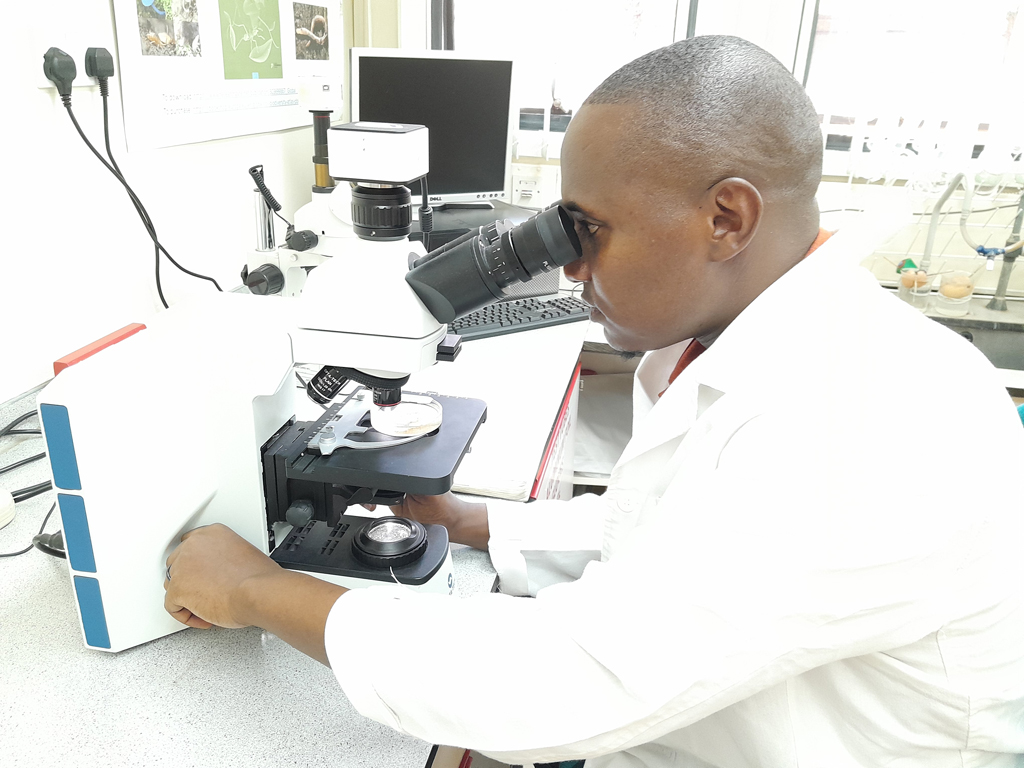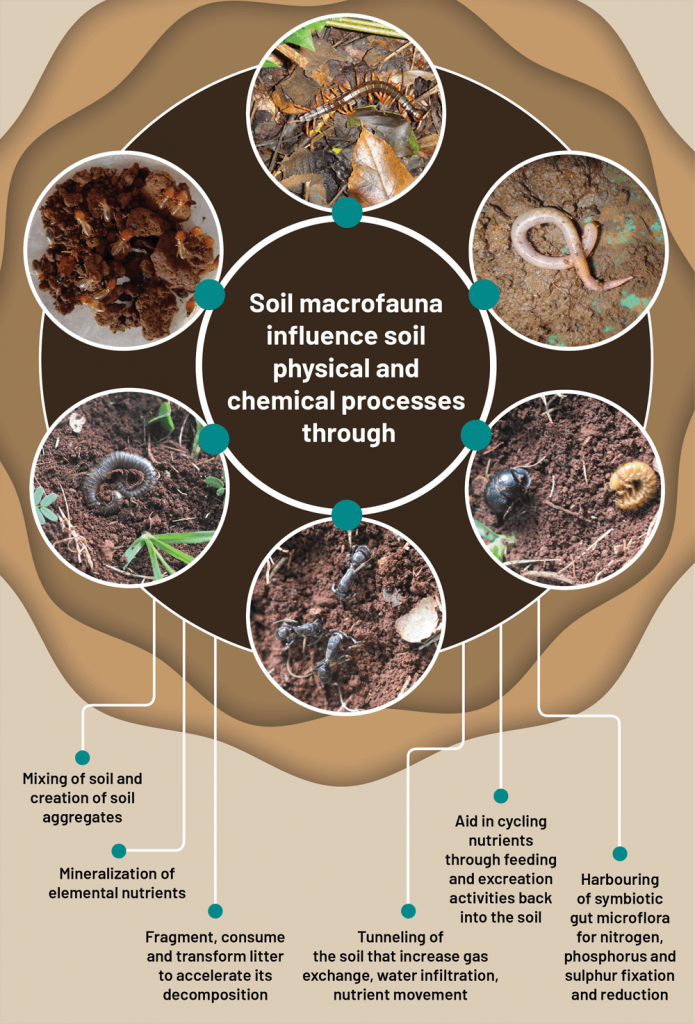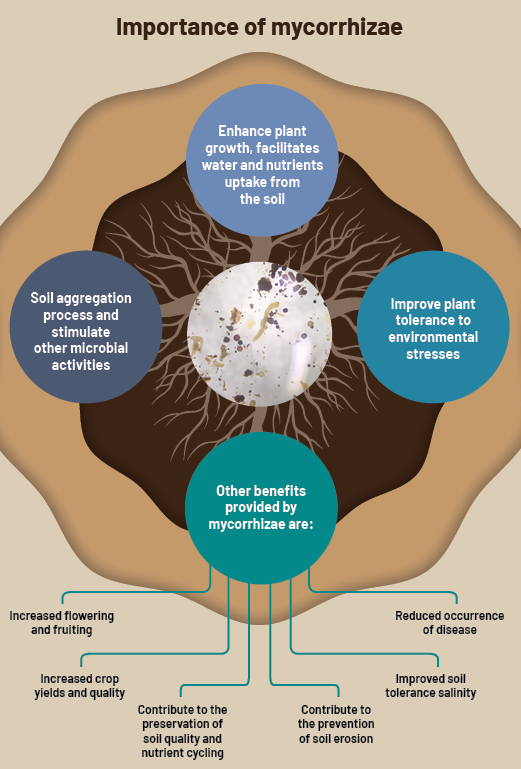About

The CIFOR-ICRAF Living Soils Laboratory opened its doors in the year 2011 and has been working mainly on the living component of soil. It aims to study how these soil biota – comprising organisms such as earthworms, termites, fungi and bacteria – restore and sustain ecological functions through farm management and agroforestry interventions. Agroforestry systems, defined as the interaction of trees and agriculture, have increasingly received attention as land management systems that can reverse soil degradation by promoting soil biological activity, increased nutrient recycling and greater resource use efficiency.
Soil biota play major roles in maintaining and improving soil fertility. Understanding how they do this, and how each species affects soil in different ways, is fundamental in designing studies of their interactions with soil and trees in order to improve overall farm productivity. The presence of trees is associated with a higher abundance of beneficial soil organisms across a range of agroforestry systems compared with adjacent monocrops. A keystone of our research strategy for improving soil and water productivity is to understand how different types of trees interact with soil organisms so we can develop designs that enable us to select appropriate mixtures of trees to sustain soil fertility for different sites and circumstances.
Our emphasis therefore is to develop ways of maintaining soil biota, which in turn contributes to processes such as maintenance of soil structure, incorporation of organic materials into the soil matrix and release of nutrients through decomposition processes, nutrient cycling and soil carbon storage, thereby resulting in restoration of degraded soils. Restoration of degraded soils would then lead to improved agricultural productivity through beneficial soil ecosystem services. The ability to study these changes in space as well as time will greatly enhance our capacity to understand the linkages between land use intensity, biodiversity and soil health.
We conduct high quality analysis of AMF, Bacteria and Fungi population ratio in soil across diverse degraded landscapes. The use of these biological indicators assessments has been regarded as important tools for restoring damaged and degraded lands through improving plant nutrient uptake, water relations, ecosystem establishment, plant diversity, and productivity, mycorrhizal fungi for instance play a critical role in boosting plant growth and survival. Additionally, mycorrhiza defends plants from abiotic stresses including salinity and drought as well as against root infections. It also enhances soil structure by increasing soil aggregation and water-holding capacity.
Goal
To understand the role of soil biology in enhancing and sustaining critical ecosystem functions.
Objectives
- Study Interactions between soil organisms, soil processes and ecosystem services.
- Assess the status of soil biota across gradients of land use intensity, climates and degradation status.
- Analysis of AMF abundance and diversity in soil to assess levels of land degradation across landscapes.
- Conduct assessment of Bacteria and Fungi population ratio in soil as indicators of soil and land health.
- Capacity development on crucial biological indicators of soil health.
Our analysis which aids in critical biological assessment of the soil health focuses on soil macrofauna, mycorrhiza analysis, and bacteria and fungi ratio.
Resources
- Mysterious Soil Life
- SEEING THE UNSEEN: Mysterious Mycorrhizal Community in Soil
- Video: Soil Microfauna – Mycorrhizal Community in Soil
- Video: Soil Macrofauna – Termites
- Video: Soil Macrofauna – Milipedes, Centipedes
- Video: Factors affecting Soil Macrofauna
Standard Operating Procedures
- Method for analyzing soil pH in water
- Method for Isolation and Enumeration of Bacteria and Fungi
- Method for isolation and observation of Arbuscular Mycorrhiza Fungi Spores from soil
- Method for sampling and isolation of soil macrofauna
- Method for soil wet sieving using Ejikelkamp Apparatus
To submit soil samples to the Living Soils Laboratory, please complete the online form, ensuring that all indicated protocols are met.
Living Soils Laboratory sample submission form
Soil macrofauna
Soil macrofauna are soil organisms that are greater than 1 cm long or have a width or diameter equal to or greater than 2 mm and include ants, beetles, earthworms, millipedes, centipedes and termites.

Mycorrhiza
Mycorrhiza is a mutual non-pathogenic symbiotic association between fungus and plant roots. In natural ecosystems, most plants form associations with fungi either intracellularly as in arbuscular mycorrhizal fungi (AMF) or extracellularly as in ectomycorrhizal fungi. In the association, fungus colonizes the host plant’s root tissues intracellularly and receives photosynthetic products made by the plant. In turn, the fungus enhances the plant’s growth, facilitates water uptake as well as availing the major nutrients such as phosphorus and nitrogen. The plant is protected in periods where there are adverse soil conditions by the mycorrhizal association.

Bacteria and fungi ratio
The soil microbial community is made up largely of bacteria and fungi which are primary consumers. Both play a key role in the decomposition of organic residues in the soil ecosystem. Their ratio is measured to determine their proportion in the microbial community.
The ratio is an important biological indicator of soil health and ecosystem. The ratios are influenced by carbon-nitrogen, type of plant residue, soil type as well as the management practices.

Contact persons:
- Leigh Ann Winowiecki, PhD (l.a.winowiecki@cifor-icraf.org)
- Lukelysia Mwangi (l.n.mwangi@cifor-icraf.org)



















